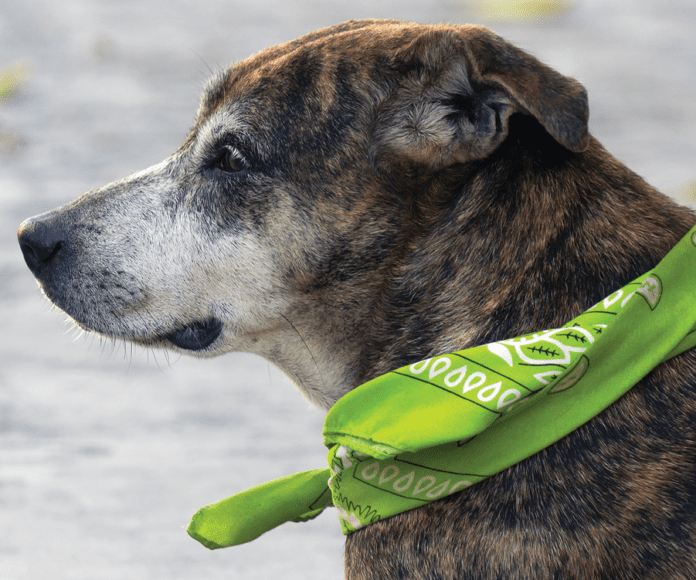You know how the stress of four years in the White House can turn even a relatively young president prematurely gray? Turns out those same four years can also gray the muzzle of a young dog under duress. Researchers reported the finding in a journal called Applied Animal Behavior Science.
They assessed the grayness of the hair on the muzzles of 400 dogs ages one to four (no white or light-colored dogs allowed in the research because it would be too difficult to determine whether any of their hair had turned gray). They also asked the dogs’ human family members to respond to a number of statements about their dogs’ personalities and temperaments. From “strongly disagree” up through “strongly agree,” people rated such things as whether “My dog”
- is typically fearful.
- whines or barks when left alone at home.
- responds to groups of people by cringing, cowering, hiding, or not interacting.
- responds to groups of people by barking or growling.
- jumps up on other people when greeting them.
- loses focus and ignores me when there is a lot of activity occurring in the environment.
The responses to the statements were meant to elicit information not just about fear and anxiety but also about impulsivity, that is, an inability to settle and remain calm. The participants were not told the purpose of the study, so they could not alter their answers, even unintentionally, in a way that would skew the results about which dogs are more apt to turn gray.
The upshot: the degree to which a dog was anxious and/or impulsive (which could indicate stress) correlated with the extent of his or her muzzle grayness. Loud noises, unfamiliar animals, and unfamiliar people were specifically linked with prematurely gray hair in fearful dogs. Notably, female dogs were more likely to present graying muzzles than
male dogs.
There are a number of biological reasons for why feeling stressed could cause premature grayness, which can be a sign of premature aging. One is that stress alters the production of the fight-or-flight hormone adrenaline, which is associated with hair color changes.
Helping your dog avoid premature aging
Dogs, just like people, are born with certain temperaments, and some are going to be more naturally anxious than others. But you can play a role in keeping your dog young for as long as possible by remembering that dogs are exquisitely sensitive, some more than others. And you can alleviate tension and impulsivity by doing the following:
- Make sure your pet gets plenty of physical activity, as that helps calm anxious souls.
- Protect your dog from things — and people and animals — that scare her. Desensitizing a dog works if it’s done gradually and systematically, not if you throw her into situations that make her nervous and expect her to just deal.
- Talk gently to your dog, and sometimes enthusiastically, but never angrily or impatiently.
- Don’t rush her on walks.
- Don’t forget to let her know she’s special by giving her toys and, here and there, treats.
- Engage in consistent training, even if it goes very slowly. Learning what you would like her to do will help steady her in addition to strengthening your bond with her.
- Consider taking her to an animal behaviorist if she can’t settle despite your best efforts.





